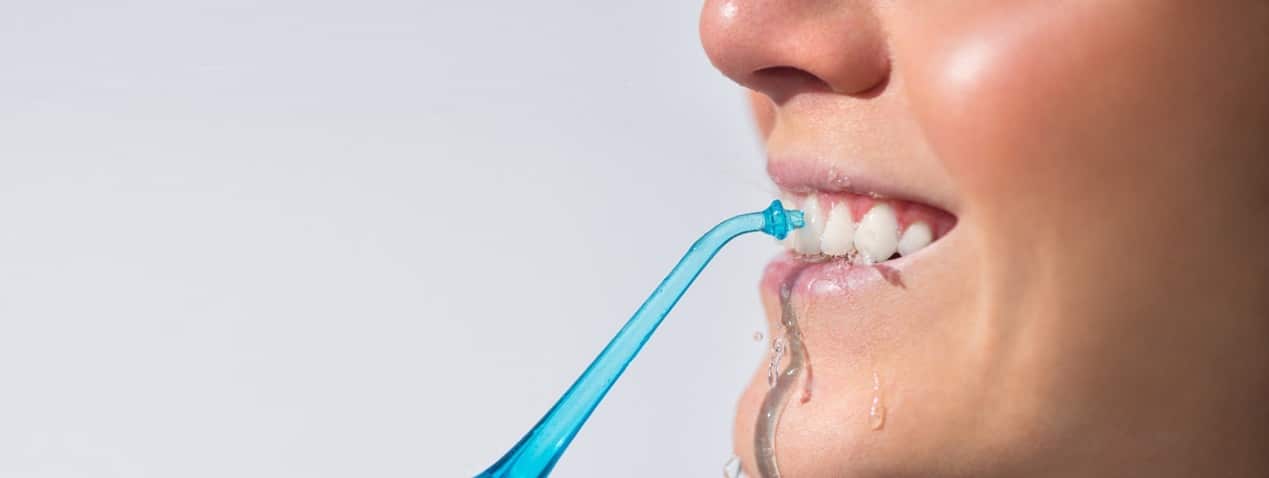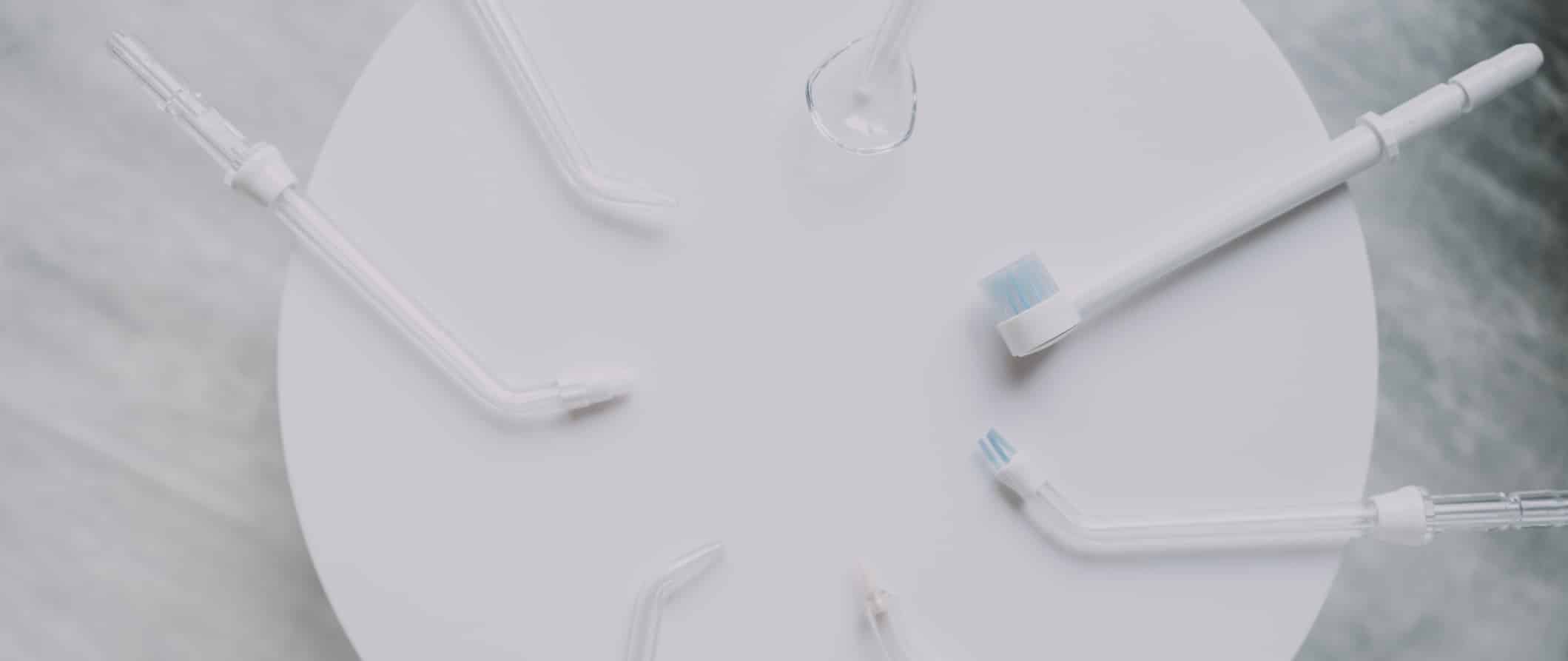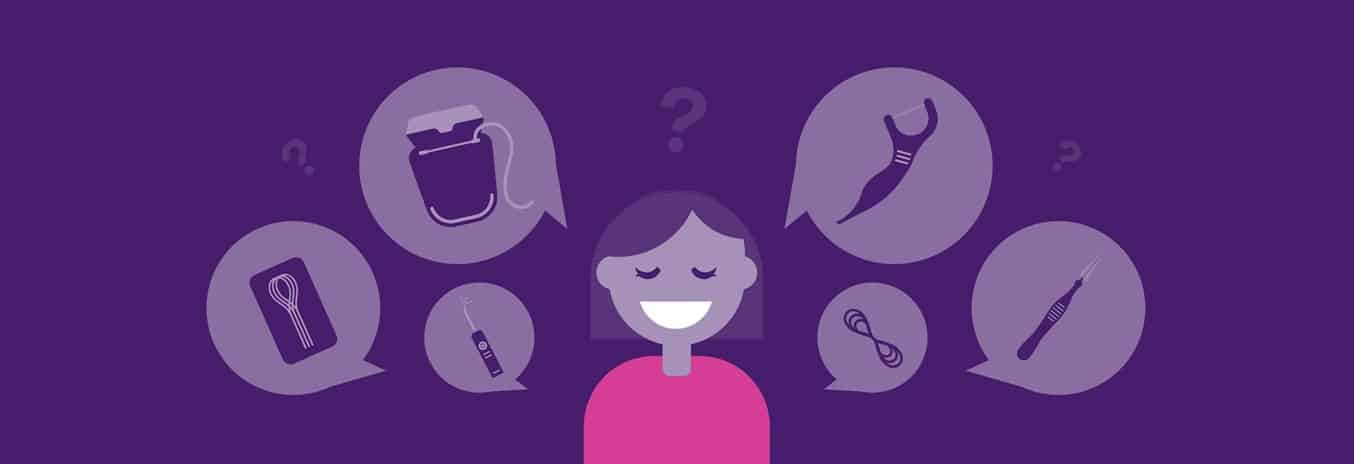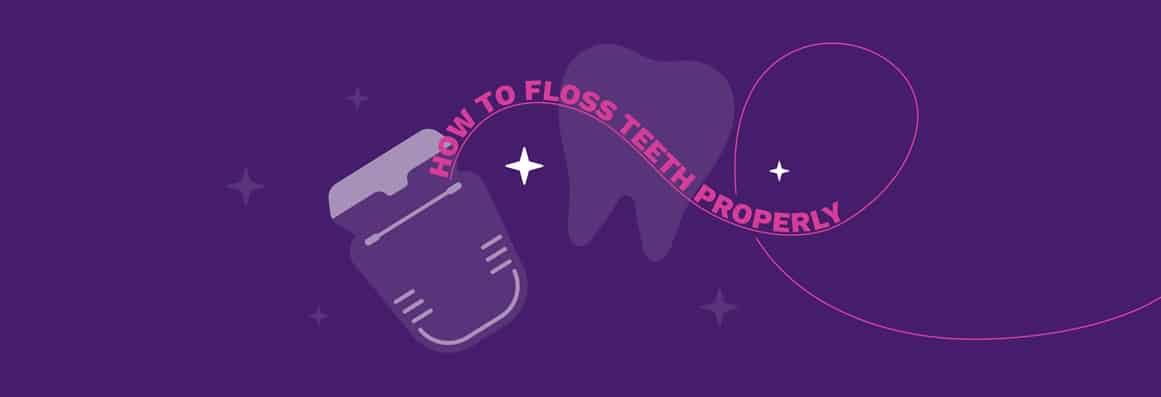Water Flossers: Everything You Need to Know

If you’ve been considering including a water flosser in your home dental routine, there are few better choices for your oral health. Water flossers, also known as oral irrigators or dental water jets, are an effective tool that helps wash away bacteria, food particles, and debris.
The best-known water flosser is the Waterpik brand, which has become the generic term to describe water flossers in general. It’s also what we recommend using most, so we’ll focus on the Waterpik brand of water flossers for this article, explaining its uses, benefits, and what type to look for based on your needs.
What Is a Water Flosser?
A water flosser is a type of dental floss that relies on a stream of water to flush away bacteria and debris from between your teeth, on your teeth’s surface, and in gum pockets. It’s especially good at cleaning teeth that have a lot of space between them, and it’s more effective than using dental tape alone.
Who Should Use a Water Flosser?
We recommend everyone use a water flosser because it rids your mouth of bacteria that toothbrushes and other types of floss can’t do. It’s also essential for older people because space develops between their teeth as they age due to the natural breakdown of soft tissue (similar to how our skin breaks down). Food can lodge in these spaces or pockets in between gums, causing bacteria and irritation.
What Are the Benefits of Water Flossing?
The main benefits of water flossing are its ability to remove plaque, reduce bacteria, and fight gingivitis by reducing inflammation and bleeding in ways a toothbrush and dental floss can’t. It can navigate deep within the gum pockets, which is particularly important for people with periodontal disease. Waterpik claims that its pik pocket tip (designed for those with periodontal disease) is suitable for treating pockets up to 6mm. A water flosser is also essential for people with braces and All-on-4s.
Another major benefit is that you don’t have to worry about being too aggressive or overdoing it with a water flosser, unlike floss tape, where you can sometimes cut your gums. Waterpiks also have different tips tailored to individual needs, such as the previously mentioned pik pocket. And Waterpiks are easy to use!
What Should I Look for When Purchasing a Water Flosser?
Decide Whether You Want a Countertop or Handheld Cordless Flosser
Countertop: The countertop water flosser has the most pressure settings and features the largest reservoirs. Some are chargeable and some you plug in, and some tips work best with countertop models. For example, the implant denture tip is most compatible with countertop models because it offers more precise tip placement.
A countertop water flosser is generally better than a handheld cordless one, but there are reasons you may prefer a handheld model.
Handheld Cordless: This is easier to travel with, and you can use it in the shower.
On the other hand, many of our patients find a cordless device more difficult to use. For one, you may need to fill up its smaller reservoir several times to achieve a proper cleaning. Also, the handle is bulky because it contains the reservoir, making it harder to maneuver.
Features
Water flossers offer many features, most of which come down to personal preference. Because there are too many to list here, we’re highlighting the ones we think are most important:
- A large reservoir (The countertop models have larger ones than cordless ones.)
- Adjustable power settings
- Typical spray from about 10 to 100 PSI
- A pressure setting range from 1 to 10
- A small handle for easy maneuvering
You’ll want to use less pressure when you first start using a Waterpik, especially because it will give you more flexibility. For example, if you have a sensitive area, you can decrease the pressure before increasing it for the rest of your mouth.
Make Sure it’s ADA-Approved
Your device should be ADA-approved, which means the water flosser is deemed safe and has shown efficacy in removing plaque and helping to prevent or reduce gingivitis when used as directed.
Consider If It’s Compatible with a Variety of Tips
Some water flossers allow only one attachment type, but you may need to use more than one or transition to a different one down the road. For example, the WaterPik Fusion has only a toothbrush attachment. Although the Waterpik Fusion is a great product (it’s a Waterpik/electric toothbrush, best for people who want both but don’t want to buy them separately), purchasing a water flosser with several attachment types is better.
Purchase One From a Reputable Brand
We suggest the Waterpik brand. One of the most trusted brands, Waterpik has been around since 1962 and has performed a lot of research and based their designs on their results. Waterpik is also a local company headquartered in Ft. Collins.
What Are Water Flosser Tips?
Tips are also referred to as attachments or accessories, and water flossers may come with various ones that serve different purposes, such as orthodontics, periodontal disease, and bridges. We discuss all the Waterpik’s attachments in our water flosser tips page.
Can a Water Flosser Replace Flossing with Dental Tape?
Most people should use a water flosser and dental tape, but one exception is people with All-on-4s. Water flossers are excellent at cleaning gums and gaps in teeth, but they’re not as effective where teeth are tighter and cavities are more likely to form, making flossing a necessary component. Alternatively, water flossers help clean areas dental tape can’t, so it’s best to use both. To get the most out of using dental tape, we have an article on how to floss properly.
Can a Water Flosser Replace Flossing with Dental Tape?
Most people should use a water flosser and dental tape, but one exception is people with All-on-4s. Water flossers are excellent at cleaning gums and gaps in teeth, but they’re not as effective where teeth are tighter and cavities are more likely to form, making flossing a necessary component. Alternatively, water flossers help clean areas dental tape can’t, so it’s best to use both.
Can a Water Flosser Replace Brushing?
No, you still need to brush your teeth because each cleaning method — brushing, traditional flossing, and Waterpik flossing — works differently, and each method works best when combined with the others.
Can You Put Mouthwash in a Water Flosser?
Yes. Some people like the taste and believe it makes their mouths feel cleaner. Although we don’t think this offers additional benefits, feel free to use it. According to Waterpik, you should add less than 50% mouthwash to the reservoir, and the mouthwash must be either standard or antiseptic.¹ Make sure to rinse out the reservoir well after use.
How Well Do Water Flossers Work?
The Waterpik brand water flossers are clinically proven to reduce gingivitis and improve gum health.²
How Do I Use a Water Flosser?
Fortunately, it’s easy to use a water flosser:
First, select the tip you want to use. Check out our article on water flosser tips to decide which one(s) may be best for you. Waterpik has several, from everyday tips to specialty tips, and you may need to use more than one, depending on your needs.
The process will vary depending on the tip you use, but the below explains how to use the most common one: the classic jet tip.
- Beginning with your upper or lower jaw, move the tip along your outer gum line before moving into the inner gum line. Move the tip in “M” or “W” shapes instead of straight across to mimic the contour of your gum line.
- Repeat the process on the opposite jawline.
Try using your Waterpik in front of a mirror if it helps to see what you’re doing. We recommend using a device with adjustable power settings, starting with the lowest setting and gradually increasing it the more you use it. However, you don’t have to reach too high a setting. Most people reach an average “6” setting if the settings are between 1 and 10 on that device.
How Often Should I Use a Water Flosser?
You should use it daily. Some people prefer to use it in the morning, but we think it’s optimal at night before bedtime.
How Long Should I Use a Water Flosser?
For countertop models, you should use it until all the water empties from the reservoir.
For cordless models, you’ll need to fill the reservoir more than once, as it’s smaller than a countertop. Although there is no hard rule for how long to use a water flosser, strive for a time of about two minutes, and be sure to clean your entire mouth.
Should I Use a Water Flosser Before or After Brushing?
Use a water flosser before brushing your teeth because you want to spit out your toothpaste and not rinse afterward so the fluoride remains on your teeth. One exception is if you use a high-quality prescription mouthwash, such as Oracare, in which case you’ll use the mouthwash last. Also, it makes no difference if you water floss before or after brushing if you use a fluoride-free toothpaste.
Tips on Using a Water Flosser
- Use warm water because that helps decrease sensitivity. Several of our patients have complained about sensitivity when using a water flosser but noticed a big difference when they switched from cold to warm water.
- Lean over the sink when you use your flosser to avoid getting water on the floor.
How Do I Clean My Water Flosser?
Empty any remaining water from the reservoir (don’t let it sit and reuse it at a later time) and wipe it down. You don’t need to clean it often if you only fill it with water, but be sure to let it air dry if any droplets remain.
Where Can I Buy a Water Flosser?
You can buy a water flosser directly from the manufacturer, online stores like Amazon, and some dentists’ offices (though we don’t). The manufacturer’s websites are usually more expensive than places like Amazon.
Summary
We hope this guide gives you everything you need to know about water flossers and which one may be best for you. The options don’t have to be overwhelming, especially if you have good oral health. What matters most is to include a water flosser in your daily routine. We also strongly recommend using a water flosser in addition to dental tape.
References
- Waterpik. Mouthwash & Your Waterpik® Water Flosser. Waterpik.com. Retrieved November 13, 2023, from https://www.waterpik.com/product-support/articles/waterpik-mouthwash/.
- Kendall B. (2017, January 12). Why Use a Waterpik® Water Flosser? Here Are 7 Reasons. Waterpik.com. Retrieved November 13, 2023, from https://www.waterpik.com/blog/why-use-a-waterpik-water-flosser/.




